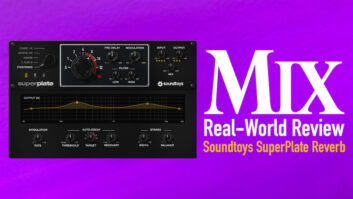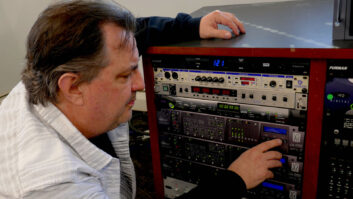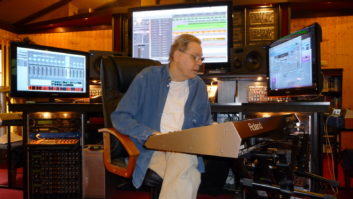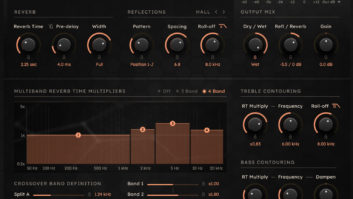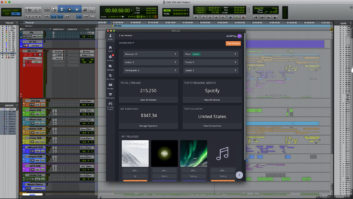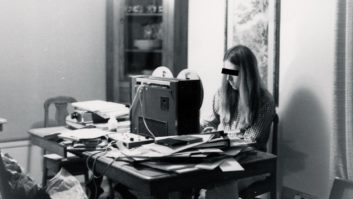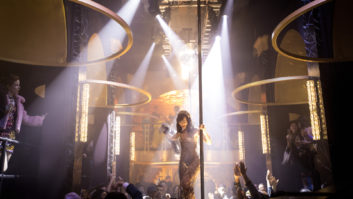There are different ways to create space in a mix. You can do it by panning sources from the center to one side to the other to create space. Other times the sounds themselves are in conflict and it’s better to reach for the EQ. This week I had a great example where I had two distorted electric guitars that both had the Marshall bite sound to them. Panning them around in different speakers helped a bit but in the end I had to pull the high frequencies off one of them to help it sit better in the mix. Another more artistic way of creating space in your mix is to create a dimensional cue by adding reverberations or delays. Reverbs can add the sense of closeness or distance and space depending on how you set up your reverb units.

The effects units I have to work with on a regular basis is a TC Electronic M-One, a TC Electronics D-Two (delay), a Lexicon PCM 80 and a Yamaha SPX90. Each unit has it’s respective strengths and weaknesses. When I was working in the studio I had hours to page through every reverb patch preset and adjust the reverb parameters to be just perfect for the track and the instrument that I was applying reverb to. In live sound however you don’t have the pleasure or luxury of time. So what I do is I have 3 reverbs that all sound completely different and are preset for general needs. Mind you, If I had more reverb units I’d have more flexibility but sometimes too many choices can also be paralyzing. I find that sometimes when I limit my creative tools I am actually a little more creative. I have set one reverb to a somewhat short decay time around 500ms and it’s a very dark sounding reverb that I use to add fullness in midrange information. The second reverb unit I have is set with about 1 second of decay time again and accentuates frequencies between 1kHz and 4kHz to bring out the character of vocals or the snare or sometimes an acoustic guitar. Reverb 3 is set to a patch with a 3 second decay and is insanely bright. I use this occasionally on snare, but mostly to generate the breathy vocal sound.
It’s too difficult many times to get the right kick drum sound with just one microphone, channel strip, EQ and compressor, right? That’s why so many people typically use a “kick in” and “kick out” mic on separate channels so that they can get the tight beater sound from one mic and the big thump from another mic each that are positioned and tailored to capture that sound. I use several different effects units the same way to get the right sound I want. By adding varying amounts of short reverb, long reverb and bright reverb to each instrument I’m effectively customizing a reverb tail that works for that instrument in the mix. In some senses it’s like I have created a reverb unit for each instrument. It’s too hard to find a great reverb patch that works well on a lot of things. And when you do, typically it’s only for one specific piece of music. I’ll find something that works well on female vocals but doesn’t flatter the male vocals or acoustic guitar or work as a drum reverb.Two tracks I can’t stop listening to lately that I think have amazing reverb on are Sting’s Fields of Gold and Fragile.
I’d like to know how you typically use reverbs in your mix to create space or what songs you like that have great use of reverb.
Jeremy Blasongame is currently a part-time A3 for a concert production company and a Tech Arts Director at Sunridge Commmunity Church. Over the past seven years, he has also worked in two major recording studios and is the author of Church Audio Blog. Feel free to email him at: [email protected] or find him on twitter at@JBsoundguy, or leave a comment below for a good conversation.
